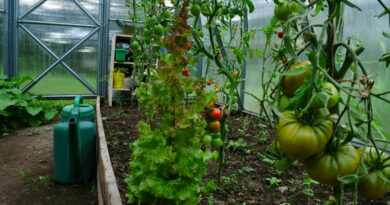Inside the Modern Eco Friendly Home: How People Redefine Sustainable Living One Step at a Time
When Melissa Grant (name changed on request), a graphic designer from Portland, Oregon, signed the papers for her first home back in 2018, she wasn’t thinking about saving the planet. “I just wanted to cut my bills,” she says with a laugh. “But what started as a money-saving project somehow became an obsession with sustainability.”
A few years on, Melissa’s modest suburban house has turned into something of an eco experiment. The roof glints with solar panels, her vegetable patch refuses to take a season off, and even her shower water finds its way back to her garden through a graywater system. For her, an eco friendly home is less a design choice and more a quiet manifesto — proof that it’s possible to live comfortably without leaving a heavy footprint.
Across the United States, stories like Melissa’s are becoming common. Families are discovering that sustainability isn’t about rustic minimalism or a trendy lifestyle—it’s about responsibility. From energy-smart architecture to zero-waste kitchens, the eco friendly home has grown into a living, breathing system. It’s not just about saving resources; it’s about rediscovering balance in a world that’s long forgotten how to live lightly.
Why Sustainability Matters Now More Than Ever?
The U.S. Environmental Protection Agency (EPA) estimates that the average household contributes over 20 metric tons of CO₂ annually. This startling number isn’t just about cars or travel—it includes the electricity that powers our homes, the packaging that wraps our food, and even the waste we send to landfills. As energy prices soar and environmental degradation becomes impossible to ignore, sustainable living has turned from an eco-conscious buzzword into an economic and ethical choice.
The eco friendly home is the centerpiece of this transformation. It represents a practical, scalable way for individuals to make an impact. With governments offering tax incentives for renewable energy and the construction industry pivoting toward green materials, sustainability is no longer a luxury—it’s the blueprint for modern living.
Key reasons behind the shift:
- Rising energy costs and the need for long-term financial savings.
- Government incentives promoting renewable technologies.
- Awareness campaigns highlighting the personal benefits of eco-conscious living.
- Millennial and Gen Z homeowners are driving green design trends.
Building an Eco Friendly Home from the Ground Up
Sustainable architecture isn’t about grand gestures—it’s about thoughtful decisions that collectively reduce environmental harm. From the materials you choose to how your home consumes energy, every element plays a role.
Smart Construction Choices
An eco friendly home doesn’t begin with bricks and beams—it begins on the drawing board. The first sketch often decides how lightly a house will tread on the planet. Architects are now weaving sustainability into blueprints through passive solar design, positioning homes to capture the sun’s warmth in winter and deflect it in summer. The idea is simple yet profound—let nature do some of the heavy lifting.
Traditional materials like cement and steel are giving way to gentler options—bamboo, reclaimed wood, cork, and recycled metal—each carrying a smaller environmental burden and a story of renewal. The rooftops, too, are changing colour, literally and metaphorically. Green roofs—part garden, part insulation—soak up rainwater and temper indoor temperatures, while rainwater harvesting systems quietly gather what the skies offer. Together, these small, thoughtful innovations redefine the home—not as a consumer of resources, but as a participant in nature’s cycle.
Key green building strategies include:
- Used to reduce transportation emissions.
- Installing insulated windows and energy-efficient doors.
- Implementing modular designs with locally sourced materials to minimize waste during construction.
- Integrating smart sensors for lighting and HVAC optimization.
Energy Efficiency: Powering Homes for the Future
If there’s a heart to every eco friendly home, it’s the way energy flows through it. Energy-efficient systems don’t just save money—they redefine how we interact with power.
From Solar Panels to Smart Thermostats
The era of fossil-fuel dependency is fading fast. Homeowners are now investing in solar photovoltaic (PV) panels, geothermal heating systems, and battery storage units, which enable them to produce and store their own energy. The latest smart home systems even track consumption in real time, empowering residents to reduce waste effortlessly.
A smart thermostat, for instance, can cut energy bills by 15% annually simply by adjusting indoor temperatures based on occupancy. Paired with smart lighting and appliance control systems, it allows the home to “think green” even when you’re away.
Simple ways to improve home energy efficiency:
- Switch to LED lighting and motion sensors.
- Opt for Energy Star-certified appliances.
- Seal windows and doors to prevent energy leaks.
- Use solar water heaters and low-flow fixtures
Water Conservation: The Hidden Sustainability Factor
Water scarcity might not be as visible as air pollution, but it’s one of the most pressing global issues. Every drop counts—and our homes can play a part in conserving it.
Designing Water-Smart Homes
An eco friendly home is designed to respect this most precious resource. Installing dual-flush toilets, low-flow faucets, and aerated showerheads can drastically cut household water consumption. The graywater systems, which recycle lightly used water from sinks and showers, are becoming a cornerstone of sustainable design.
Outdoor conservation also plays a vital role. Many homeowners are turning to xeriscaping—a landscaping approach that relies on native, drought-tolerant plants. It eliminates the need for frequent watering and chemical fertilizers, allowing your garden to thrive naturally.
Water-saving ideas for your home:
- Collect rainwater for irrigation.
- Use drip systems instead of sprinklers.
- Choose native plants that require minimal watering.
- Fix leaks promptly—every drop matters.
Waste Management: Reducing the Home Footprint
Sustainability doesn’t end with energy—it extends to everything that enters and exits a home. Managing waste responsibly is one of the most impactful steps in eco-conscious living.
Zero-Waste Living: A Lifestyle Revolution
The average American produces around 4.5 pounds of waste daily, much of which ends up in landfills. The concept of a zero-waste home challenges this cycle by promoting reuse, recycling, and composting. In a truly eco friendly home, the trash bin becomes nearly obsolete.
Composting organic waste not only diverts materials from landfills but also enriches the soil for gardening. Reusable containers, bulk buying, and DIY cleaning solutions can further slash household waste. The philosophy is simple—consume mindfully and discard responsibly.
Ways to adopt zero-waste practices:
- Replace paper towels with washable cloths.
- Store food in glass jars or stainless steel containers.
- Compost food scraps and garden waste.
- Support brands with sustainable packaging.
Sustainable Interiors: Beauty Meets Responsibility
Sustainability doesn’t have to look boring. Today’s eco-friendly designs seamlessly blend aesthetics with ethics, creating interiors that are both visually stunning and environmentally friendly.
Eco-Chic Decor Trends
Natural textures, organic fabrics, and earth-toned color palettes are defining the modern eco aesthetic. Designers are increasingly turning to reclaimed furniture, upcycled decor, and biophilic design—an approach that brings natural elements indoors. Think bamboo floors, linen drapes, clay walls, and houseplants that purify the air.
An eco friendly home often tells a story through its decor. Every piece has a purpose, and every choice reflects a conscious decision. From handwoven rugs to soy-based candles, these elements evoke warmth and mindfulness without the environmental cost.
Sustainable interior ideas:
- Choose non-toxic paints and finishes.
- Use LED accent lighting for ambiance.
- Add indoor plants for natural air purification.
- Support local artisans who use ethical materials.
Community Impact: Beyond the Individual Home
While individual actions matter, collective sustainability amplifies results. The rise of eco-conscious neighborhoods and community initiatives shows that change thrives in collaboration.
The Power of Green Communities
In cities like Austin and Seattle, entire neighborhoods are being built with sustainability at their core—complete with shared gardens, solar grids, and bike-sharing networks. These communities not only lower carbon footprints but also foster a sense of shared responsibility and resilience.
Melissa Grant, the Portland homeowner, often hosts “green weekends,” where neighbors exchange compost, swap clothes, and share organic produce. “It’s not about perfection,” she says. “It’s about progress—and doing it together makes it sustainable.”
Community sustainability efforts include:
- Local recycling drives and compost programs.
- Farmers’ markets supporting local produce.
- Carpooling networks to cut fuel use.
- Educational workshops on home sustainability.
The Economic Argument for Sustainable Living
Many people still believe eco-friendly living is expensive. However, the data shows the opposite—long-term savings and incentives far outweigh initial costs.
Saving Money While Saving the Planet
Energy-efficient appliances, solar panels, and better insulation reduce monthly utility bills significantly. According to the U.S. Department of Energy, homeowners who adopt renewable systems save an average of $1,500 annually. Meanwhile, government rebates and green mortgages make sustainable upgrades more accessible than ever.
Beyond monetary savings, an eco friendly home often enjoys higher resale value. Buyers today are willing to pay more for properties that offer energy independence, lower maintenance, and environmental benefits. Sustainability, in other words, is now an investment strategy.
Economic advantages of green homes:
- Reduced utility costs and maintenance expenses.
- Increased property value.
- Eligibility for tax credits and rebates.
- Lower insurance premiums for energy-efficient systems.
Technology and Innovation: The Future of Eco Homes
Innovation is the driving force behind sustainable transformation. With technology evolving at lightning speed, the future of green living looks more efficient and accessible than ever.
Smart Homes, Smarter Planet
The integration of artificial intelligence (AI) and Internet of Things (IoT) devices is revolutionizing how homes function. Smart irrigation systems track soil moisture, solar roofs adjust to sunlight intensity, and AI-driven thermostats predict usage patterns for maximum efficiency.
The next phase of the eco friendly home involves complete energy autonomy—self-sustaining structures that produce, store, and regulate their own power. With ongoing advancements in green tech, the dream of living carbon-free may soon become a global reality.
Emerging eco-home technologies:
- Solar glass windows that generate electricity.
- AI-powered energy monitoring systems.
- Carbon-neutral building materials like hempcrete.
- Recycling robots for domestic waste management.
Living the Philosophy: Everyday Choices That Matter
At its core, sustainability is not about perfection—it’s about awareness. The small, consistent actions we take every day accumulate into real change.
Simple Habits for a Greener Life
Melissa’s journey toward sustainability didn’t happen overnight. It began with reusable grocery bags, then composting, and eventually, a fully energy-efficient home. The beauty of an eco friendly home lies in its flexibility—it adapts to your pace, your priorities, and your possibilities.
Whether you’re replacing incandescent bulbs, supporting eco-friendly brands, or walking instead of driving, each choice contributes to a larger transformation. The key is consistency and consciousness.
Easy habits to start today:
- Carry reusable water bottles and shopping bags.
- Cook more plant-based meals.
- Unplug electronics when not in use.
- Educate others about sustainable living.
Conclusion: The Future is Green, and It Begins at Home
The shift toward sustainability isn’t a trend—it’s a turning point. In every solar panel installed, every rain barrel placed, every compost bin filled, there’s a quiet revolution unfolding. The eco friendly home symbolizes not just modern architecture, but a moral and ecological awakening.
As Melissa puts it, “Living sustainably isn’t about sacrifice—it’s about harmony. When my home breathes with the planet, I feel like I finally belong here.”
In that sense, the future of sustainable living doesn’t rest in policy or technology alone. It begins in our homes, our choices, and our willingness to live not apart from nature—but as a part of it.
If you think this information is useful you can…
Get updates and read additional stories on the Health Orbit Fan Page.
For Guest posts, sponsored posts and other details, please click the ‘Contact Us’ page.




